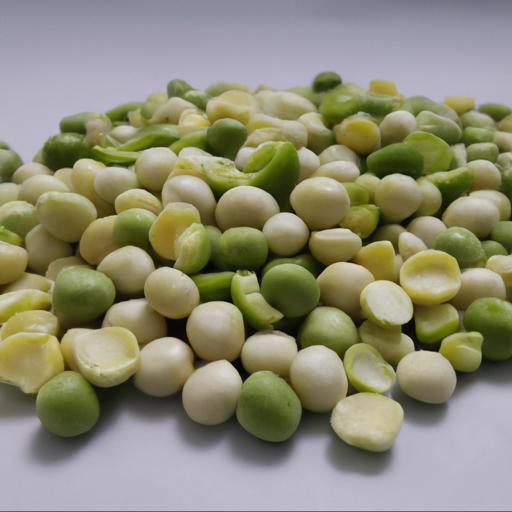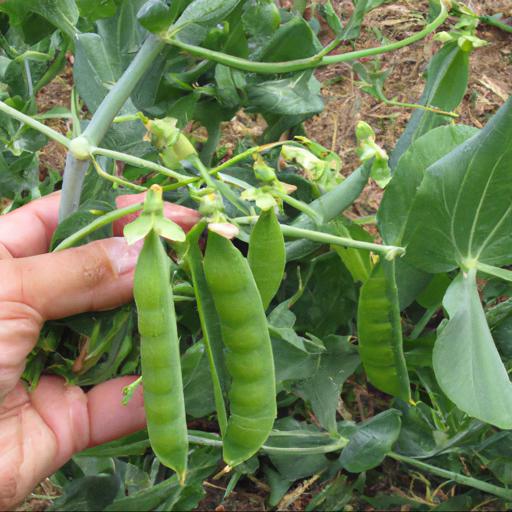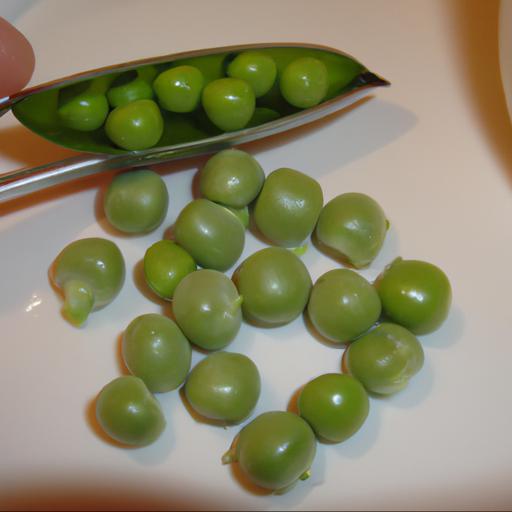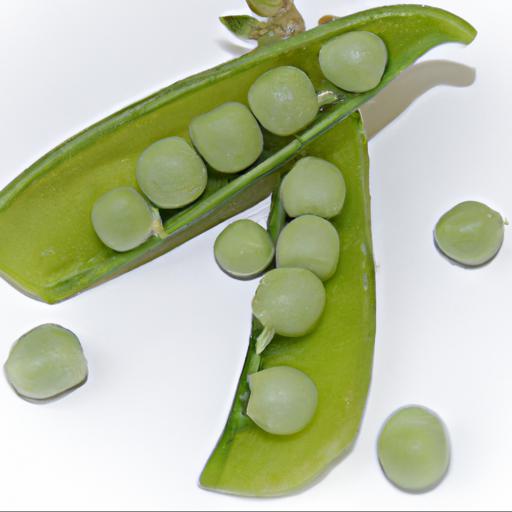Pisum sativum maxigolt is a type of pea that has become increasingly popular in recent years. This variety of pea is known for its high yield and resistance to disease, making it an ideal choice for gardeners and farmers alike.
Its sweet flavor and tender texture make it a favorite in many dishes. In this blog, we will explore the unique characteristics of Pisum sativum maxigolt, its benefits, and how to use it in your cooking. We will also discuss the best growing conditions for this pea variety and how to care for it to ensure a successful harvest.
Finally, we will look at the health benefits of Pisum sativum maxigolt and how it can be used to create delicious and nutritious meals.
Nutritional benefits of pisum sativum maxigolt

Pisum sativum maxigolt is a variety of garden pea which is enriched with nutritional values and offers a great source of food when it comes to small scale cultivation. This variety of pea is renowned for its large size peas which is adequate enough to hold a significant amount of proteins compared to other varieties.
Also, the delicious flavor of Pisum sativum maxigolt is a preferred choice among gardeners due to its nutty taste. When cooked, the pisum sativum maxigolt delivers a substantial amount of proteins, carbohydrates and essential minerals such as calcium, phosphorus and magnesium. Additionally, it’s an excellent source of dietary fibre which can improve one’s digestive health.
It also contains niacin, selenium, thiamin, choline, and other important vitamins. This variety of pea is versatile and can be used in a variety of recipes. Moreover, it can be used in soups and curries, salads, can be added as a side dish in any meal, or used as a garnish.
Furthermore, pisum sativum maxigolt can also be used for making different kinds of snacks, such as hummus, roasted vegetables, or crackers. Overall, Pisum sativum maxigolt is a great addition to any meal, as it provides a significant number of nutrients and minerals that are essential for the body’s functionality.
Additionally, the variety of recipes which it can be used makes it a desirable choice among gardeners and cooks alike. Therefore, it can be inferred that Pisum sativum maxigolt is an excellent source of nutrients and can make various delicious recipes, making it an ideal pick for any garden.
Growing and harvesting pisum sativum maxigolt

Growing and harvesting Pisum sativum Maxigolt can be an exciting and rewarding activity for any UK gardener looking to reap the rewards of their hard work. This unique type of pea is a great way to produce a nutritious snack or to use in cooking. In this blog, I will guide you through all the steps necessary for growing and harvesting Pisum sativum Maxigolt in the UK climate.
The first step in growing Pisum sativum Maxigolt is to prepare your soil. This type of pea is best grown in well-drained soil, with a pH range between
2 and 0.
To ensure that the soil has correct drainage and nutrient levels, consider adding a good quality compost to the mix when planting. Additionally, it is important to ensure that your soil has adequate amounts of phosphorus, potassium and nitrogen. Once the soil is prepared, Pisum sativum Maxigolt can be sown directly into the soil or into small pots and then transferred to the garden.
When planting the seeds, it’s important to ensure that each seed is placed at least 5 cm apart to give them enough room to grow. Once the peas have germinated, they can be transplanted into their permanent locations.
After transplanting, it is important to ensure that the plants receive adequate water, as Pisum sativum Maxigolt are prone to drought stress. When watering, it is important to avoid overwatering as this will lead to root rot. Additionally, it is important to regularly remove any weeds or dead leaves from around the plants to ensure the plant receives the best opportunity to thrive.
The final step in growing Pisum sativum Maxigolt is harvesting. Once the plants have matured, the peas can be removed from their stalks by gently squeezing them until each pod pops open. For best results, it is important to harvest the peas in the morning before 1 p. m. , as harvest time can significantly affect the flavour and texture of the beans. After harvesting, the peas can be stored in air tight containers or frozen for future use. Overall, growing and harvesting Pisum sativum Maxigolt doesn’t have to be a difficult process. If all the steps outlined above are followed, soon you can enjoy the sweet taste of homegrown peas and reap the rewards of your hard work.
Cooking with pisum sativum maxigolt

The world of vegetable gardening is expansive, even more so if you opt to grow your own hard-to-find exotic produce. The Pisum Sativum Maxigolt is a powerful example of a unique member of the Pea family.
If you’re looking for a delicious and nutritious addition to your vegetable garden, this pea is amongst the most desirable varieties out there. Native to India, the Pisum Sativum Maxigolt is a particularly hardy pea that fares well in temperate climates. When ready for harvest, the pods can be eaten raw or cooked for a smoky-sweet flavor.
To bring out the taste the most, boiling or steaming should be the best methods to try. It is well-regarded for its creamy texture and earthy flavor which will add a distinct flavor to any recipe. This hardy legume is well suited for a variety of dishes and can add an interesting twist to traditional dishes.
Consider using it in soups, curries, salads, or pilaf dishes. It can even be roasted and made into savory snacks that pair nicely with drinks.
In any case, the Pisum Sativum Maxigolt is sure to add a unique flavor to any dish. If you’re looking for an exotic flavor to add to your garden, this hearty pea may be the perfect vegetable for you.
Health benefits of pisum sativum maxigolt
Pisum sativum maxigolt is one of the most popular garden peas on the market due to its reputation for producing top quality, delicious peas. Known amongst gardeners as the ‘super-pea’, this variety offers a number of health benefits that are sure to make it a super-star staple in your own garden. Pisum sativum maxigolt contains plenty of vitamins, minerals and dietary fiber, making it an excellent addition to a balanced diet.
Not only is it an exceptional source of vitamins A and C, it is also rich in thiamin, riboflavin, calcium, iron, magnesium and phosphorus. Furthermore its essential minerals.
Additionally, P. sativum maxigolt has a particularly high fiber content, which is essential for helping to maintain a healthy digestive system and reduce cholesterol levels.
In fact, just half a cup of cooked P. sativum maxigolt contains a whopping 5 grams of dietary fiber – that’s almost 20% of your daily recommended intake. One great advantage of growing your own garden peas such as P.
sativum maxigolt is that you’ll get the freshest peas available. Furthermore, P. sativum maxigolt is a particularly hardy variety that can tolerate cold temperatures and occasional frosts, so you’ll have an ample harvest from spring to autumn.
The pods of this variety are succulent and sweet with a slightly nutty flavour that guarantees delicious taste in every bite. In summary, Pisum sativum maxigolt is a popular garden pea variety that offers a plethora of health benefits in addition to a delicious flavour.
Not only are its nutritional contents impressive, it’s also a remarkably hardy variety that requires minimal fussing and can handle cold temperatures with ease. Growing it in your own garden will ensure you’re enjoying fresh, mouth-watering peas all year round while gaining the additional health benefits of this super pea.
Our video recommendation
Bottom Line
Pisum sativum maxigolt is a variety of pea plant that is known for its high yields and disease resistance. It is an early-maturing variety with a short growing season, making it an ideal choice for home gardeners.
Its pods are large and can be eaten fresh or used for canning. This variety is a great option for those looking for a reliable and productive pea plant for their garden.
FAQ
What is the scientific name of Pisum sativum?
The scientific name of Pisum sativum is Pisum sativum L.
What are the nutritional benefits of consuming Pisum sativum?
Pisum sativum, commonly known as peas, is a nutritious and versatile food. Peas are a good source of dietary fiber, protein, vitamins A, C, K, and B6, and minerals such as iron, magnesium, and zinc. They are also low in calories and fat, making them a great addition to any healthy diet. Peas are also a good source of antioxidants, which can help protect against certain diseases.
What are the different varieties of Pisum sativum?
The different varieties of Pisum sativum include garden peas, snow peas, snap peas, and sugar snap peas.
How is Pisum sativum grown?
Pisum sativum is grown by planting the seeds in well-drained, fertile soil in a sunny location. The seeds should be planted about 1/2 inch deep and spaced about 2-3 inches apart. Water the soil regularly and provide adequate drainage. Harvest the pods when they are mature, usually after about 60-90 days.
What are the uses of Pisum sativum?
Pisum sativum, commonly known as the garden pea, is an edible legume that is widely used in a variety of dishes. It is a source of protein, fiber, vitamins, and minerals, and is also a popular ingredient in soups, stews, salads, and casseroles. Peas can also be dried and used in a variety of recipes, such as risottos and curries.
What is the optimal temperature for growing Pisum sativum?
The optimal temperature for growing Pisum sativum is between 18-20°C.

